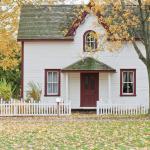Home Sweet Home: The Eight Essentials of Wildfire Protection
Wildfires are often unstoppable in residential areas mainly because people neglect to take the right precautions. Here are eight simple steps that everyone needs to take to keep their house safe from an advancing wildfire.
Landscape for wildfire safety
To protect your home, you should dedicate a broad strip of land around to the creation of a fuel break. When an advancing fire comes upon such a fuel break - an area with no vegetation and nothing to burn - it can have no way of going any further.
Fuel breaks don't necessarily have to be bare strips of land. Instead, they can be filled with fire-safe vegetation - short plants that have succulent leaves and plenty of sap. Aloe arborescens, Greasewood and jade are good examples. When a fire arrives, these plants cook and boil in it, but don't let it advance.
Store propane and other fuels the right way
If a wildfire does get past your fuel break and into your yard, you don't want to make it any worse by adding fuel to the flames. Storing the propane tank for your barbecue grill under your deck or inside any flammable structure can be a risky move. Here are a few propane storage rules.
Your propane tank needs its own fuel break. Wherever you choose to store it, it should have nothing flammable within 10 feet (a wooden porch or deck included).
In the event of an advancing fire, your propane tank should be able to reflect heat, rather than absorb it. To enable this, make sure that it is free of rust and is painted in a reflective color.
Protect your roof
An ember from an exploding branch or a shower of sparks from a nearby fire can easily land on your roof and start a fire. The first thing that you can do to protect your roof is to re-roof with a noncombustible material like concrete or asphalt. This is only the first step, though.
You need to keep your gutters free of flammable, dry leaves.
If you have roof vents, you must make sure that they are protected with as fine a mesh as the building code will allow, to keep any flying embers out.
Make sure to display your house number clearly
You should use a fireproof house number sign that's visible right from the street. Only then can fire truck personnel quickly know which house to head for in the event of an emergency call.
Stay prepared at home
It isn't just public buildings that need fire evacuation strategies. Every home should have one, too. For instance, as soon as the fire alarm goes off, everyone should know to rush out and congregate at a previously arranged safe spot. If someone has a disability, it should be the responsibility of an able-bodied member to bring them out.
Be sure to insure every vehicle
It's unsafe to leave any cars in the driveway. All cars should be parked in the garage and have their keys in the ignition to make a quick getaway possible. You should make sure that you never leave a car uninsured. In the event that a wildfire does destroy vehicles, you'll have a hard time buying new transportation.
Make sure your home insurance policy is up-to-date
When you buy home insurance, you will typically be asked to catalog all your belongings for the appraiser so that your insurance company knows how much you need when disaster strikes. As this prominent Calgary insurance broker tells homeowners and renters, it's important to not leave the cataloging and inventory-taking behind once the insurance purchase is done with. As you add valuables to your home each year, you need to keep updating the insurance company.
Catalog every one of your belongings and take pictures
You must also maintain your own personal inventory along with pictures of all your valuables.
George Nesler has experienced wildfires in his area, and lived to write about them. He now likes to help others by sharing his insights on wildfires and home safety on various websites.
More to Read:
Previous Posts:




